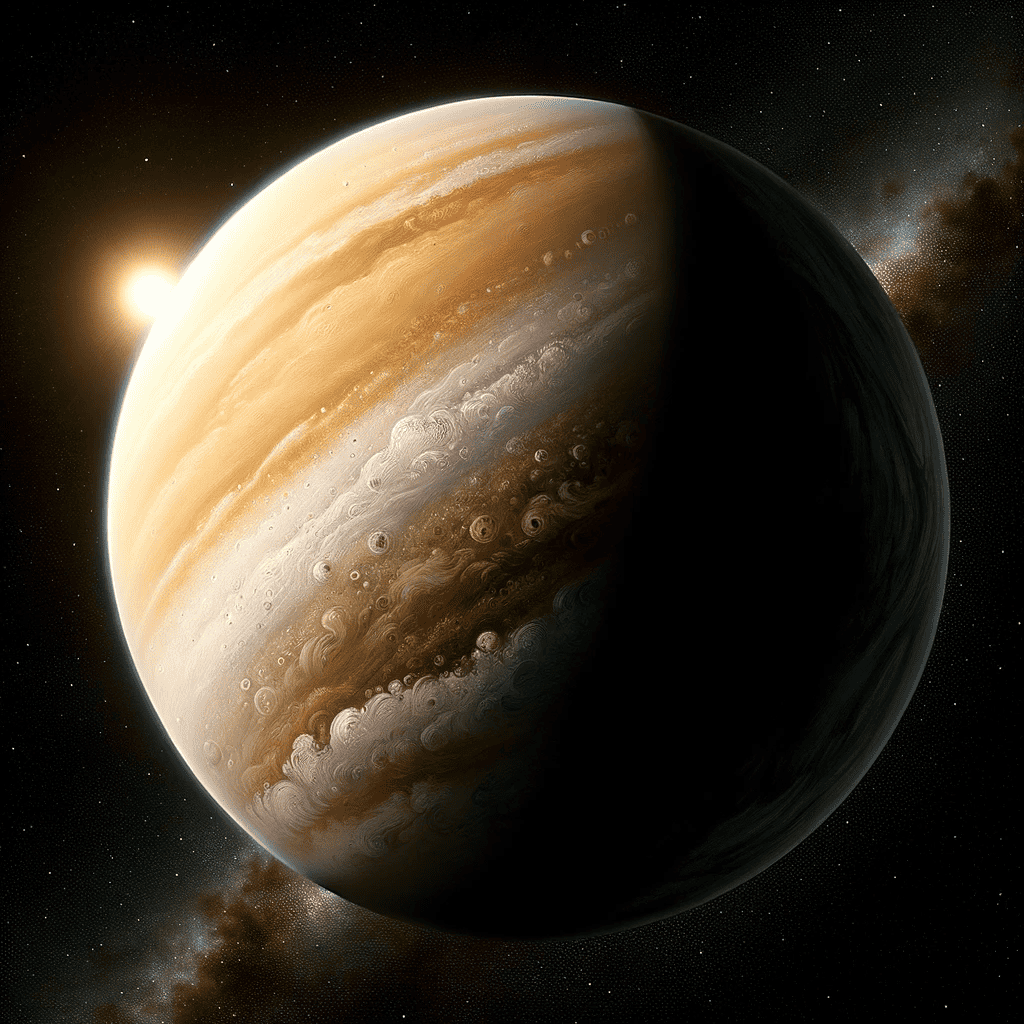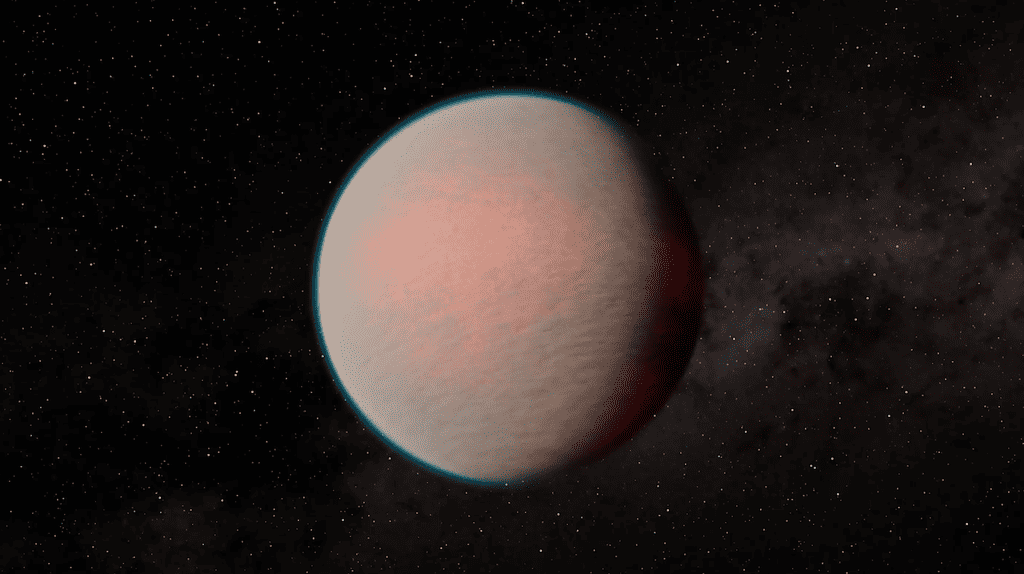The idea of a water world, a planet covered by water, has fascinated both scientists and artists for centuries. For scientists, a water world is a planet that has a great deal of water on its surface (or beneath the surface). Some studies have suggested that exoplanets with oceans are common in the Milky Way, but we haven’t really been able to find them.
This is where GJ 1214 b comes in.

This planet (also called Gliese 1214 b or Enaiposha) is 48 lightyears away from Earth. It’s a “sub Neptune” or “mini Neptune.” Mini Neptunes are a type of planet less massive than Neptune but resembling Neptune in general structure and in that they lack a thick hydrogen-helium atmosphere.
GJ 1214 b was first detected by the MEarth Project in 2009, as it passed in front of its stars, blocking a tiny part of the light coming from the star. Ever since then, the planet has stirred the curiosity of researchers. Astronomers have attempted to figure out the composition of this planet and its atmosphere several times, but were unsuccessful — until now.
An international team of researchers now used infrared data from the James Webb Space Telescope (JWST) and evaluated it with the help of model calculations. The results suggest a reflective, dense haze in the upper atmosphere, possibly indicating water vapour and methane.
“Our results show that the haze layer of GJ 1214 b must have a composition different from known celestial bodies,” says Maria Steinrueck from the Max Planck Institute for Astronomy (MPIA) in Heidelberg, Germany. She is a co-author of the paper, which appears in the journal Nature, and performed the model calculations essential for evaluating the observations.
Data suggests water
Researchers looked at the data reported by the JWST and tried to figure out what chemical composition would explain the observations. They’re looking for something to explain a highly reflective layer at the top of the atmosphere. The problem was that neither of the likely candidates seem to be responsible for this effect.
“Neither soot particles nor so-called tholins reflect the star’s radiation sufficiently strongly,” Steinrueck states. The term “tholin”, coined by Carl Sagan, describes a variable mixture of hydrocarbons found on Saturn’s moon Titan and other bodies in the Solar System.
Using JWST’s infrared camera, the researchers were able to create a sort of heatmap of the planet. The key element here was that they managed to get information from all angles. The mini Neptune is tidally locked — one side of the planet constantly faces its star (and is hotter) while the other faces away from the star (and is cooler).

“The ability to get a full orbit was really critical to understand how the planet distributes heat from the day side to the night side,”says Eliza Kempton, professor at the University of Maryland, USA and lead author of the research article. “There’s a lot of contrast between day and night. The night side is colder than the day side. In fact, the temperatures shifted from 279 to 165 degrees Celsius (535 to 326 degrees Fahrenheit).”
So the planet is pretty hot, but this doesn’t rule out the possibility of water.
The new JWST observations confirm an atmosphere that contains hydrogen and helium. In addition, they also show that there are other elements in the atmosphere.
Water is one of these elements. Water vapor in the planet’s atmosphere fits very well with the observed data, hinting that the planet could well be a water world. But hydrocarbons (specifically methane) could also account for some of the observations. In fact, both water and methane could be present in the planet’s atmosphere.
What does this tell us about the planet’s composition?
Results on Gliese 1214b were also discussed at the European Astronomical Society (EAS) in Krakow, Poland. Researchers discussed a follow up study carried out by Matthew Nixon. The EAS presentation discussed how the new observations could open the door to deeper knowledge of mini-Neptunes, which are one of the most common types of planets — but don’t show up in our solar system.

Even though the planet is very hot, it could still technically be a water world, with a composition like 80% water 20% rock composition. For now, however, astronomers don’t have detailed models that can explain its internal structure.
But even just finding out what Gliese 1214b may be like on the surface is very exciting for now.
“For the last almost decade, the only thing we really knew about Gliese 1214b was that the atmosphere was cloudy or hazy,” said Dr. Rob Zellem, an astronomer at NASA’s Jet Propulsion Laboratory.
“This paper has really cool implications for additional detailed climate interpretations — to look at the detailed physics happening inside this planet’s atmosphere.”
Researchers have cracked the probably componence of one of the most intriguing exoplanets we’ve ever discovered.
“GJ 1214b has been the white whale of exoplanet atmosphere characterization – the whole community has been chasing it for a long time. It’s great to finally see some of its secrets revealed,” said Laura Kreidberg, the Director at MPIA and head of the Atmospheric Physics of Exoplanets (APEx) department, where Maria Steinrueck conducts research. Kreidberg was among the first to target GJ 1214 b to determine its composition.
The follow-up study led by Nixon will look at more elaborate models of the planet’s nucleus, mantle, surface, and atmosphere, looking to understand now only the composition but also the temperature structure.
No doubt, Gliese 1214b will continue to be an interesting planet to study for a long time.
The study was published in Nature.






